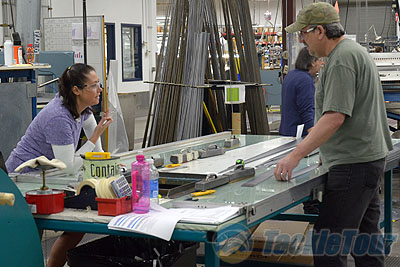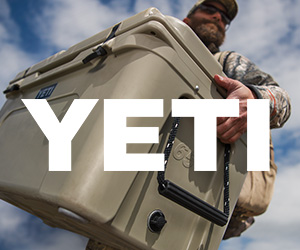How G.Loomis Rods
are Made – A Behind the Scenes Look at the Factory’s Secret Sauce

| Date: |
5/6/11 |
|
Event: |
Factory Behind
the Scenes (5/2/11) |
| Manufacturer: |
G.Loomis |
| Reviewer: |
Zander |
Introduction:
The rod business has
changed a great deal over the years with increasing emphasis put on material
types and component options, but the actual manufacturing process for many rod
builders continues to be a very manual process, one that still involves some
good old fashioned craftsmanship. There are not many rod manufacturers that
still build all of their rods here domestically and premium rod brand G.Loomis
is one of those companies on the short list that is still designing and manufacturing
rods stateside. G.Loomis agreed to open their doors for a behind the scenes look
at their entire manufacturing process and we headed to their headquarters in
Woodland, Washington to see firsthand just how the company builds their rods.

G.Loomis is
located in Woodland, Washington
A little background:
When Shimano acquired G.Loomis many anglers thought it was just a matter of time
before the company’s rod production was going to be moved overseas. Outsourcing
to other countries has been a popular trend among many competing manufacturers
in an attempt to leverage more affordable labor. Through all these years Shimano
has viewed the G.Loomis operation in Woodland as an strength and continued to
empower the company, allowing the team at G.Loomis to not just invest in
upgraded
machinery but the total rod offering, which has grown significantly since the
acquisition. The launch of NRX at the last ICAST once again thrust the brand into the spotlight, highlighting
the organization’s desire to push the high end envelope in custom rod
manufacturing.

The front
office at G.Loomis
Since that launch we have
had many questions about the rods and while we have been writing about various
G.Loomis rods for the past 11 years I have always been curious about the
company’s manufacturing operation. This week I finally got that opportunity when
I received an invite to check out the factory from Bruce Holt, who previously ran
the company after Gary Loomis, and is currently the Director of Communications. He
didn’t have to ask me twice, and I was on the next plane to the nearest airport
which is located in Portland, Oregon.

Bruce Holt is
the Director of Communications at G.Loomis and not only previously ran the
company but has been with the organization for over 25 years
Welcome to Woodland:
Once I walked of the plane I was greeted by Bruce who was joined with Jeff
Gustafson, a writer for In-fisherman. The plan was to get to Woodland in the
morning and take a tour of the facility, then spend the next two days fishing on
rivers in the surrounding region for Smallmouth. I was certainly eager to fish,
but I was even more excited about taking a look at the heart of the G.Loomis
operation.

This is how
the rods start out. The foundation for each rod is graphite prepreg
Woodland,
Washington is located about an hour north of Portland and is a small town in
comparison, with a population of just under 5000 people. The town is in close
vicinity by a number of prominent rivers including the Willamette, Hood, and
Columbia and there is world class Trout, Salmon, Steelhead, Sturgeon, and
Smallmouth bass fishing all within driving distance. Thus it is no surprise that
a small town like Woodland would spawn some of the biggest fishing rod brands in
the United States including Lamiglas and G.Loomis.

Bruce begins
the tour where graphite is measured
Time to go inside:
When we pulled up to the front of G.Loomis at 6:30am on Monday the factory was
already bustling. G.Loomis has occupied other facilities prior to moving to
their current building in the early 90’s which has just over 40,000 square feet
and houses the entire manufacturing operation.

Each rod
begins with the graphite prepreg hand cut using a variety of templates. The
combination of the graphite base material, the number of sheets, and length of
the cut gives each rod a unique power and action























